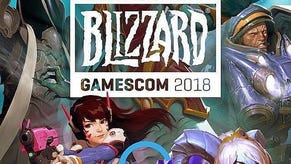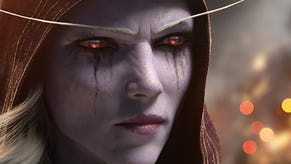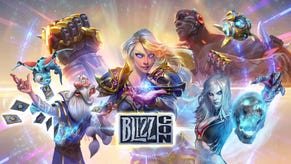StarCraft II: Legacy of the Void PC Review: Once More Unto the Void
After five years, StarCraft II has finally reached its conclusion. Here's our final review.
This article first appeared on USgamer, a partner publication of VG247. Some content, such as this article, has been migrated to VG247 for posterity after USgamer's closure - but it has not been edited or further vetted by the VG247 team.
It's hard to believe that StarCraft II is finally finished. In one way or another, I've been waiting for this moment for more than 15 years; and now that it's here, I'm not sure how I feel. Gaming has changed so unbelievably in even just the past five years that Legacy of the Void in some ways feels like an anachronism, as if it has sprung straight out of 1999.
And yet, this is not the StarCraft of years past. It brings with it a number of interesting structural changes, some of which are designed to widen its appeal beyond its hardcore base, and some of which are meant to streamline it and heighten its appeal as an eSport. It's risky of Blizzard to mess with the formula that helped make the original StarCraft the best real-time strategy game ever made, but with the series having slowly slid of relevance since 2010, there's no denying that some tinkering is warranted. And for the most part, the changes seem to work.
The most obvious change is in the pacing. The traditional six workers has been upped to 12, and command center structures have had their supply increased as well. The net effect of these changes is that builds come out much more quickly, lessening the room for error. Additionally, resource patches seem to run out much more quickly, necessitating multiple expansions to stay ahead of the resource curve.
I'll admit, the new structure has really thrown me for a loop. It requires a change to a mindset that has become ingrained in 15 years of experience. It's not just the need to get used to a new set of opening movies, it's the need to adjust to a much more unforgiving pace. I'm not quite there yet.
Elsewhere, the StarCraft II metagame has reached its final form, give or take a few tweeks here or there. To tell you the truth, it's too early to say whether it's in a good place - everyone seems to be kind of figuring things out right now - but Blizzard seems to have gotten all three races back to a place where they are well-rounded and have distinct identities. As with Heart of the Swarm, the last expansion, Blizzard has once again shaken up the unit mix by giving every race two new units - a tank and an aerial unit for the Terrans, a stealth unit and a siege unit for the Zerg, and an aerial unit and a commando-style infantry unit for the Protoss.

Being primarily a Protoss player, I've yet to find a good use for the Adept, the commando unit capable of using a shadow to teleport into an enemy base, but the Disruptor aerial unit and its area of effect attack is quite common. Zerg players seem to be pretty happy to have the Lurker back, a stalwart from the days of Brood War who got lost in the transition to StarCraft. As for the Terrans, they're doing what they always do, which is roll around in an infrantry-heavy ball of death with Vikings serving as aerial support.
All in all, StarCraft remains much as it always has - a highly competitive game that is in some ways the video game equivalent of speed chess. Much has been of its decline amid the rise of MOBAs, not the least because real-time strategy is a style of game that requires a great deal of commitment and practice to learn, but it remains enticing in its own way. It takes a bit to learn the ins and outs of the strategy, but once you do, there's little better than breaking through an opposing army and walking straight into their headquarters with heat ray-firing deathbots.
Our Powers Combined
While the new units will probably get most of the press, they may not be the most important addition to StarCraft II. That honor, in my opinion, goes to the new cooperative missions.
Co-op has never been a strong suit for StarCraft. While other games have put more emphasis on teamwork, StarCraft has mostly limited itself to 2v2 battles and so-called "comp stomp" battles against the computer. To this point, the best bet for a player looking for a more cooperative flavor has been the Arcade - the section reserved for heavily customized maps (as it happens, MOBAs got their start in just such an environment).
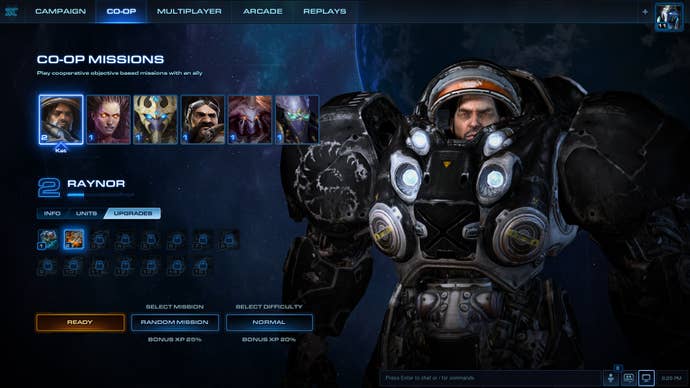
Legacy of the Void changes that with several distinct co-op missions with distinct objectives. Playing with either a random player or a friend, you select from one of six available heroes, all of whom have their own distinct abilities and units. Raynor can build units from the Terran army and call down the Hyperion, while Kerrigan can enter the battlefield herself to crush opponents. Objectives range from working together to stop enemy trains from traversing the map to destroying void rifts to stop Hybrids from attacking and overwhelming your forces. Each mission has its own achievements, and heroes level up over time and gain new abilities.
We'll see how well the co-op missions go over with more casual players, but StarCraft has been needing a mode like this for a long time now. It serves to vary up the gameplay and gives purpose to the online play beyond walking into the buzzsaw of competitive play or messing around with custom maps. If any mode gives Legacy of the Void legs beyond the campaign, it's the new co-op mode.
I'm admittedly a little more skeptical of Archon Mode, which still strikes me as a gimmick. Interesting as it is to team up with a friend to manage one base, effectively halving management duties, the level of coordinating required is intense. Still, more options are always better, even I don't see myself using the mode myself.
As always, multiplayer remains the lifeblood of StarCraft; but with competitive multiplayer having become so insular, it's nice to know that more casual fans have options outside of the campaign. As for the campaign itself, I'm going to have some more thoughts on that next week when I wrap up this review-in-progress and offer some thoughts on StarCraft II as a whole. En Taro Tassadar.
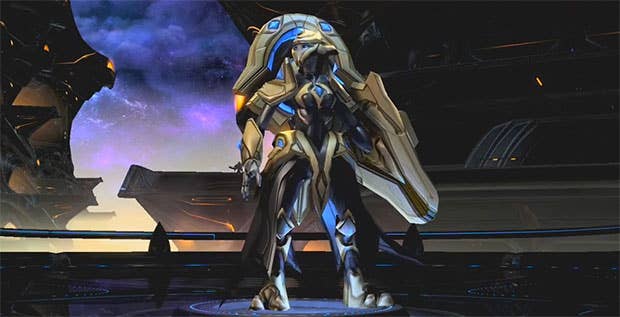
So let's talk about Legacy of the Void's campaign, which wraps up a story set in motion by Wings of Liberty back in 2010. Is this a story that warrants three full campaigns and five years of development? No, not really. But strictly from a design standpoint, it's still by far the best real-time strategy campaign ever - a gift for fans who have stuck with Blizzard since the days of the original WarCraft.
After focusing on the Terrans and Zerg in the first two chapter, Legacy of the Void shifts the spotlight from the the Protoss, who continue in their function as the StarCraft universe's elves. Being a Protoss player myself, I'm partial to their surplus of laser beams and giant mechs; though, as in the first two entries, playing as the same race can get a tad old at times. That sense of repetition is exacerbated a bit by the fact that the Protoss are by nature a tad staid, with most of their dialogue being the sort of earnest-sounding speech you'd expect to find in high fantasy. The most interesting character is Alarak - a Protoss who has essentially embraced the Dark Side of the Force. His snide observations go a long way toward breaking up the otherwise overwrought dialogue.
As in the first two entries, missions are chosen from a hub that allows you to interact with your various helpers, as well as customize your units and abilities. Each unit has three different variations that become available as the story progresses, and they can be chosen from at will, so you don't have to worry about getting locked into any one strategy. Old favorites like the Reavers and the Arbiter join Carriers, Motherships, and cloaked Dark Templar, the only real omission being the Scout. It takes a bit to build up unit variants, but the three variants makes for a satisfying array of options.
Complementing the units are the special abilities of the Spear of Adun - the Protoss flagship. Completing bonus objectives will earn you solarite, which can in turn be invested into options like calling down a orbital strikes, automatically harvesting gas, or even freezing enemy units and buildings for a few seconds. These abilities are immensely useful, and if I'm being honest, a little overpowered. The ability to stop time alone makes assaulting even the most heavily fortified locations relatively easy. As a result, I never failed a mission on Normal difficulty. Having said that, though, the Spear of Adun's abilities go a long way toward streamlining the drudgery of resource gathering, and like the unit customization, there are interesting choicees to be made when it comes to investing your solarite.
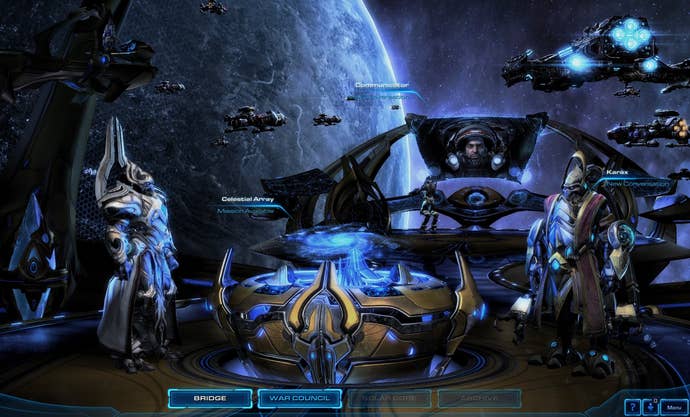
The missions themselves are customarily great. We've come a long way from the days of WarCraft II, where every mission would boil down to killing every unit on the map before running out of money. One mission has you supporting Alarak as he battles a rival in a Dragon Ball Z-like war of psionic abilities, your units contributing the energy needed for him to push his opponent back until he finally tumbles into a pit. Another has you physically moving your base on a sliding platform in pursuit of resources. In general, the mission design in StarCraft II has been very strong, and Legacy of the Void is no different, only occasionally lapsing back to traditional RTS design tropes like "hold out until help arrives."
Tellingly, the best missions are the ones where you take control of a hero in a manner similar to that of WarCraft III. My favorite moment in the entire campaign had Artanis and an ally teaming together in a manner that reminded me of a shounen anime as they tossed lightning bolts and exploding minions at Zerg coming from all directions. It's hard not to view it through the prism of the MOBA genre, which has all but replaced real-time strategy in the hearts and minds of PC gamers, with StarCraft II being one of the few holdouts.
It's funny, because there was a time when real-time strategy was the forward-thinking genre that rankled traditionalists. Now, some 20 years after the debut of Command & Conquer, StarCraft II is itself raging against the dying of the light. Legacy of the Void's campaign in many ways feels like a throwback - the logical endpoint for a tradition of RTS campaign design that extends back to Dune II. It's nostalgic in a way, which is not something I ever expected I would say about StarCraft II when it debuted five years ago.
If Legacy of the Void shows anything, it's that the march of progress is relentless.
Is StarCraft II's campaign a success?
So with StarCraft II's campaign now complete, let's talk a little bit about the series as a whole. It was about six years ago that Blizzard caused a furor by announcing that StarCraft II's campaign would be split into three parts - a crazily ambitious approach to video game storytelling that has yet to be replicated outside of perhaps Xenoblade Chronicles (which incidentally never realized its ambitions). It's the sort of approach that only a developer like Blizzard could take, because they are one of the few developers who can count on their fans to stick around for years at a time.
Unfortunately, the story that Blizzard opted to tell was not really one that could really bear up over the course of three full campaigns. There's a lot going on in Wings of Liberty, Heart of the Swarm, and Legacy of the Void - Kerrigan's quest for revenge against Arcturus Mengsk and the real story behind the creation of the Zerg and Protoss among them - but the overarching story is surprisingly conservative. As a villain, Amon is one-dimensional - something to fight and not much more. His true purpose, which is finally illuminated in Legacy of the Void, seems almost beside the point.
Really, Blizzard's biggest mistake was trying to redeem Kerrigan from her role as "Queen B***h of the Universe." She was the perfect villain - a woman discarded and abused by powerful men who gains the power to strike back. Her evil is tragic, and even when she's destroying whole civilizations, it's hard not to root for her. Her rise to the top of the heap in Brood War made for a great sequel hook. I spent years wondering how everyone would end Kerrigan's roaring rampage of revenge.
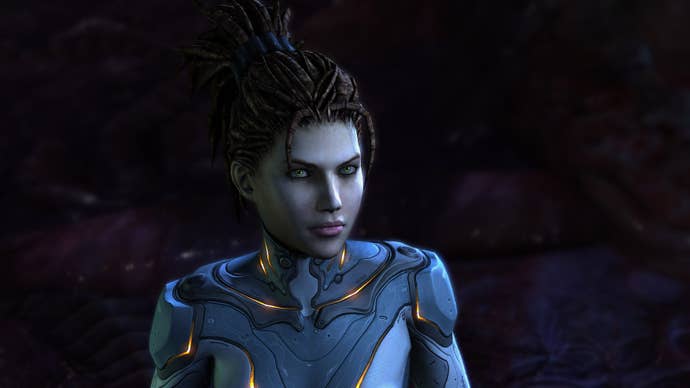
Instead, Blizzard copped out and pulled a Darth Vader with Kerrigan, allowing her to make a heel-face turn at the expense of more interesting storytelling possibilities. Look, at the end of the day the story is just an excuse for space battles; and in all honesty, it started going off the rails back in Brood War with all the double-crosses and unlikely alliances. But as a fan of the original, StarCraft II feels like a missed opportunity.
Disappointed as I might be, though, I still think it's worth playing. Taken as a whole, it's a huge game, encompassing 80 or more missions and a variety of unique mechanics. A single campaign by itself will keep you busy for quite a while, and it's all packaged in Blizzard's customarily great presentation. Unfortunately, it also suffers from some serious trilogy creep in trying to stretch a story that could have been wrapped up in one game across three nearly-full sized campaigns.
It's been an inordinately long wait, and now that it's finally over, I find myself questioning whether it was all worth it. But at $60 for the complete collection, there's no denying that there's a ton of game here. I'm just glad that it can finally be played to conclusion.
InterfaceStarCraft's interface has come a long way, making it easy to manage large groups of units and produce them quickly. It is aided by Blizzard's large, attractive art.
Lasting AppealStarCraft II's multiplayer rabbit hole runs deep, and there are now co-op missions as well. With additional content set to arrive next year, StarCraft II should last you for quite a while.
SoundThough not as memorable as some of Blizzard's earlier soundtracks, StarCraft II's music mostly hits all the right notes. The sound effects and voice-acting are both very good.
VisualsStarCraft II's engine has help up rather well over the past few years, aided in large by Blizzard's excellent art. As a bonus, it should run well on most modern computers.
ConclusionLegacy of the Void has been a long time coming - so long that in some ways it feels like a bit of a throwback. But Blizzard has packed plenty of value into their final expansion, piling co-op missions on top of their solo campaign while tinkering with the multiplayer's pacing and mechanics. The story is ultimately disappointing, but on a mission-to-mission basis, StarCraft II represents the apex of old-school real-time strategy design. Mostly, I'm relieved that it's finished. As Tychus once said, "Hell, it's about time."



